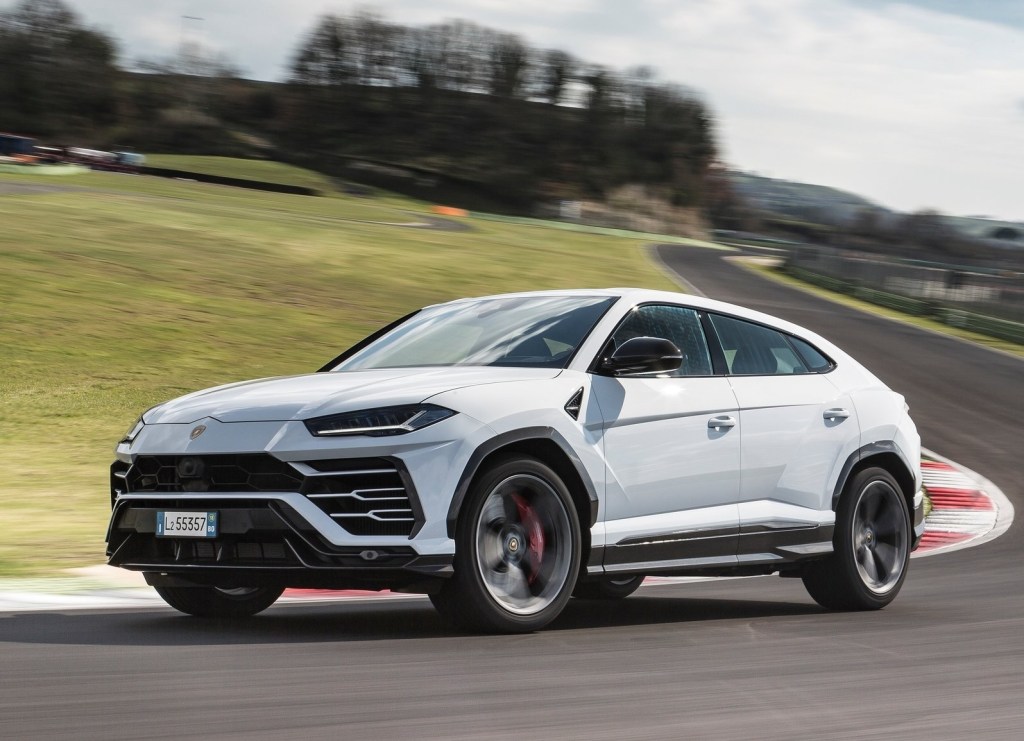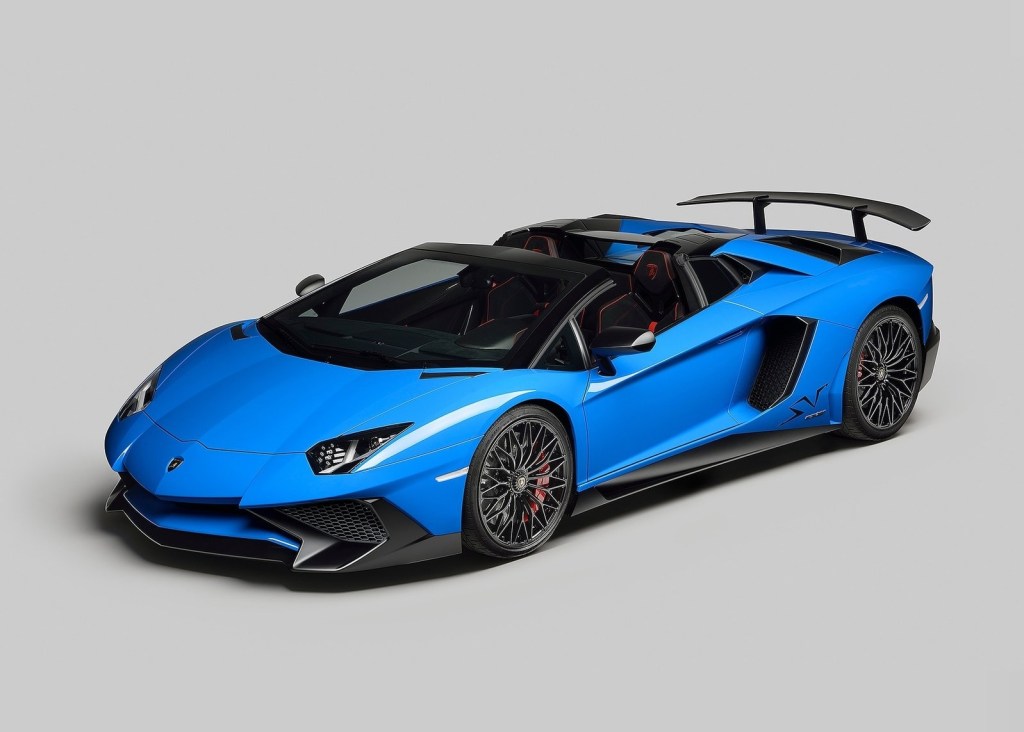
It’s a Lamborghini Family Drag Race: Urus vs. Aventador vs. Huracan
Limited-production hybrids aside, Lamborghini’s core lineup consists of 3 cars: the Urus SUV/crossover, the Aventador, and the Huracan. Despite what some think, the Lamborghini Urus isn’t the Italian automaker’s first elevated vehicle. And it’s more capable than many assume. But does it deliver on the speed front? Carwow tried to find out with a drag race.
2020 Lamborghini Urus vs. Aventador SV Roadster vs. Huracan Performante

On paper, the Lamborghini Urus in Carwow’s drag race may seem a little out of its element. True, its 4.0-liter twin-turbocharged V8 makes 641 hp and 627 lb-ft, Motor1 reports. And it comes standard with both all-wheel drive and an 8-speed automatic, Car and Driver reports.
However, it also weighs 4800 pounds, Roadshow reports. But that didn’t stop it from taking the SUV record at Car and Driver’s Lightning Lap. Its platform-mate, the Porsche Cayenne Turbo, was 3.4 seconds slower. And the smaller, lighter Alfa Romeo Giulia Quadrifoglio was 1.4 seconds slower than the Urus.

In contrast, the Lamborghini Aventador SV Roadster has both more power and less weight to carry. Its 6.5-liter V12 produces 740 hp, Top Gear reports, and in coupe form, it weighs 3868 pounds, Car and Driver reports. And, like the Lamborghini Urus, the Aventador SV Roadster has AWD. However, it makes 122 fewer lb-ft, and comes with an older 7-speed single-clutch transmission, Evo reports.
The Lamborghini Huracan Performante is the lightest of the 3, weighing in at 3429 pounds, Car and Driver reports. It’s also the 2nd-cheapest Lambo here, with a starting price of about $280,000. The Aventador SV Roadster is no longer available (replaced by the SVJ Roadster), but when it was new, it started at $535k, Evo reports. The Lamborghini Urus, though, starts at about $222,000.
While the Huracan Performante is light, with 631 hp and 443 lb-ft, its 5.2-liter V10 is a bit down on power. But it does have AWD, and a 7-speed dual-clutch automatic. Plus, it briefly held the production-car lap record at the Nürburgring, Road & Track reports.
The drag race setup
Rather than a lap test, Carwow ran a ¼-mile standing drag race and a rolling-start race. Although that doesn’t compare each car’s handling prowess, a standing drag race does test transmission and AWD software tuning, as well as weight and engine performance.
Each Lamborghini, including the Urus, comes with launch control, which is necessary to eke out the best acceleration figures. And despite its weight disadvantage, the Urus isn’t far behind the other Lamborghinis.
Car and Driver reports the Huracan Performante can do 0-60 in 2.3 seconds, and run the ¼-mile in 10.2 seconds. In comparison, the Urus needs 3.2 seconds and 11.4 seconds to do the same, Car and Driver reports. As for the Lamborghini Aventador SV, Car and Driver reported the coupe can do 0-60 in 2.7 seconds, and the ¼-mile in 10.5 seconds.
It’s a similar story when comparing these cars’ 5-60 times, which eliminates launch control, and directly compares transmissions and engines. The Huracan Performante does it in 3.1 seconds, the Aventador SV in 3.3 seconds, and the Urus in 4.4 seconds.
However, these 0-60, 5-60, and ¼-mile times are typically averaged over a few runs. And even with software assistance, it’s possible to see different numbers each time. Plus, as Carwow demonstrates, even launch control can only help so much.
How did the Lamborghini Urus do?
Carwow ran the Lamborghini Urus, Aventador SV Roadster, and Huracan Performante through 3 standing drag races, followed by a rolling race.
The reason for the multiple standing starts is because the driver of the Huracan kept launching it poorly. But even so, in both of the first 2 drag races, the Huracan finished ahead of the Urus and was starting to catch the Aventador. And in the last race, the Huracan out-right beat the other 2.
The cars then did 2 rolling-start races: one with transmissions in automatic, and another in manual. And in both cases, the Lamborghini Huracan Performante again beat the Aventador SV Roadster and Urus. Colin Chapman would be proud.
Follow more updates from MotorBiscuit on our Facebook page.


